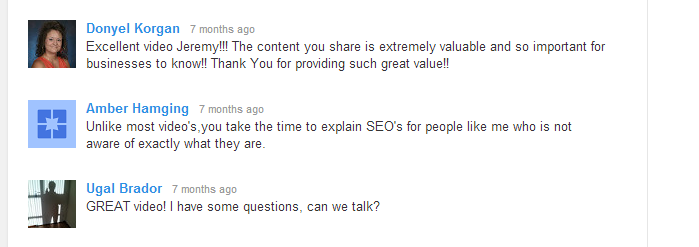Many websites promise thousands of YouTube views, likes, comments and subscribers. Most claim to provide views from real people. However, what may look like a dream come true might really be a scam in sheep’s clothing.
Artificially inflating views is a direct violation of YouTube’s Policies and Terms of Service.
“Views generated by some third-party businesses and services will not be counted or reflected on YouTube, and can lead to disciplinary action against your account, including removal of the video or account suspension.”
You must be wary. Select a website that you can trust to promote your YouTube videos organically.
Here are six telltale signs that a site is selling fake YouTube views.
1. There is no information regarding the website’s key employees.
Google is your friend. Do a thorough search of the company’s key employees. Most websites selling fake views will not list any details regarding founders or key employees. Think of it like investigative reporting; your main objective is to get to the truth.
2. The website hasn’t received any funding from outside investors.
Look for big companies or venture-backed startups because they are extremely transparent and develop strategies to enhance views organically. Using your “nose for news,” you should check to see if a website has received any investor funding. Use CrunchBase to find important insights into such companies. Keep your guard up against any website that is not listed on CrunchBase.
3. The website has not received any press coverage.
A thorough Google search should reveal if a website has been covered by notable bloggers or online publications. If you don’t find any online presence, then the website could very well be a scam. To be even more sure, add “scam” after the company’s name in the search bar to see if anyone has published their concerns or warnings online.
4. The website does not have a good Alexa traffic rank.
Alexa traffic rank measures the popularity of a website by comparing it with others on the Internet. The measure is based on the number of visitors and the number of pages viewed on each visit. If the Alexa ranking of a website is very low, then tread with caution.
5. The website is selling a high number of YouTube views for little money.
Organic promotion of YouTube videos is time-consuming and laborious. Websites that offer thousands of views for a low fee may seem like a miracle, but they may very well be a myth. For instance, a website promising 1,000 views for $5 could get you into trouble. When you’re met with such a seemingly magical promise, put back on your Sherlock Holmes hat and dig deep to find out the strategy the company employs to achieve the results they promise. Don’t be afraid to ask questions.

6. The website is selling likes or comments.
Be wary of websites selling likes and comments. Audience engagement cannot be bought; it can only be earned through good quality and relatable videos. Fake audience engagement is very easy to spot. Typically, auto-generated comments are riddled with misspellings and grammatical errors. Each fake comment is likely to reuse the same keywords and phrases as well. Therefore, fake audience engagement can put off new followers and destroy your credibility.

Buying fake views can ruin your reputation and put your channel in jeopardy. Only adopt promotional strategies that YouTube endorses and encourages. Keep an eye out for these red flags so that you will be able to recognize websites selling fake YouTube views.
Interested in getting your YouTube video discovered by masses of targeted fans? Click this link: www.promolta.com
Manasa Boggaram is a writer and has a strong passion for music, positive news and constructive journalism. When she is not researching story ideas or writing blog posts, she spends her time reading books, discovering new music and eating lots of street food.






